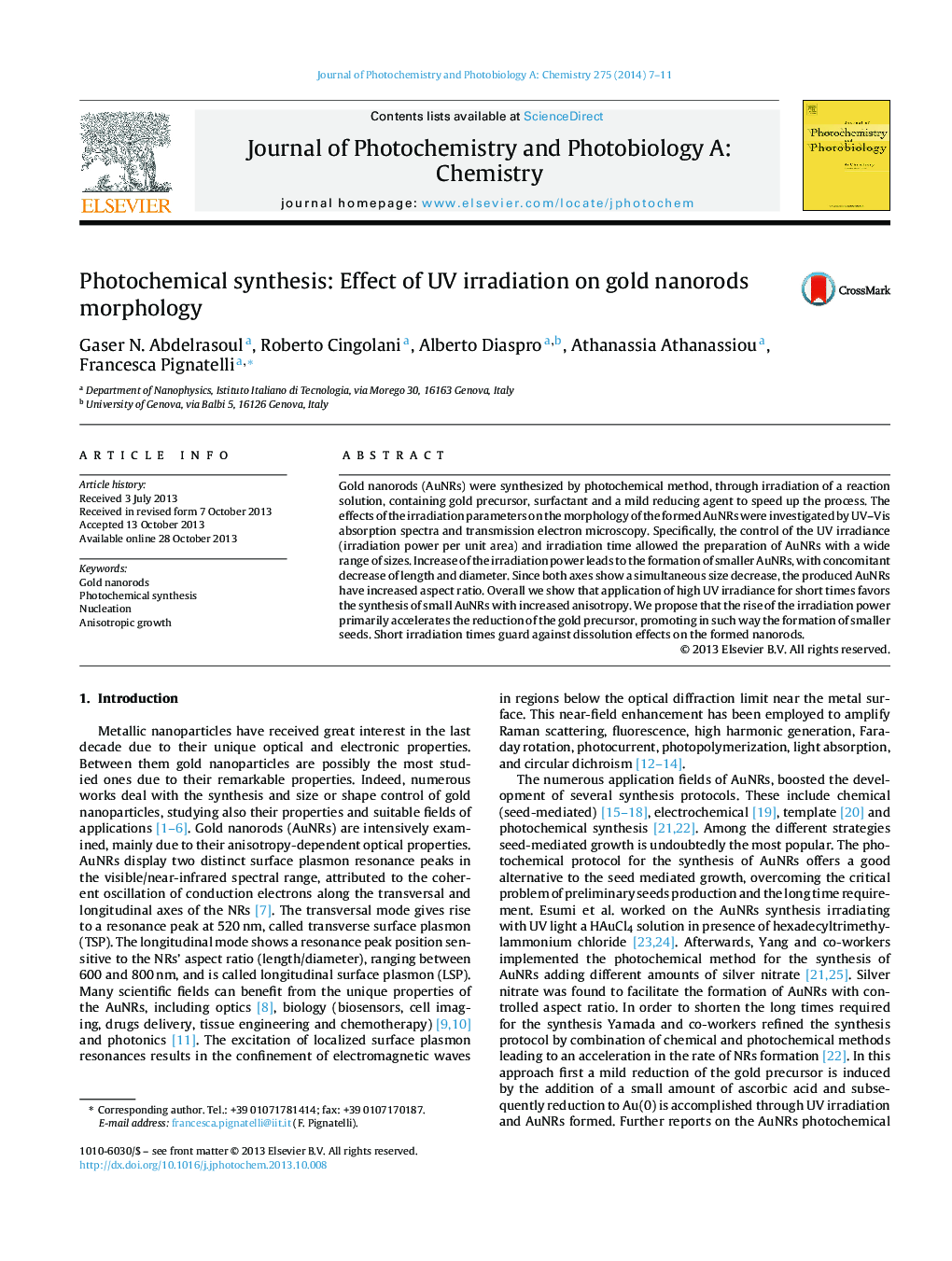| Article ID | Journal | Published Year | Pages | File Type |
|---|---|---|---|---|
| 26306 | Journal of Photochemistry and Photobiology A: Chemistry | 2014 | 5 Pages |
•We investigate the role of the different irradiation parameters in the photochemical synthesis of gold nanorods.•The irradiance used in the photochemical process is found to influence primarily the nucleation stage of the synthesis of the gold nanorods.•The control of the time of irradiation allows to follow the growth of the gold nanorods, till the precursor is finished trough photoreduction.
Gold nanorods (AuNRs) were synthesized by photochemical method, through irradiation of a reaction solution, containing gold precursor, surfactant and a mild reducing agent to speed up the process. The effects of the irradiation parameters on the morphology of the formed AuNRs were investigated by UV–Vis absorption spectra and transmission electron microscopy. Specifically, the control of the UV irradiance (irradiation power per unit area) and irradiation time allowed the preparation of AuNRs with a wide range of sizes. Increase of the irradiation power leads to the formation of smaller AuNRs, with concomitant decrease of length and diameter. Since both axes show a simultaneous size decrease, the produced AuNRs have increased aspect ratio. Overall we show that application of high UV irradiance for short times favors the synthesis of small AuNRs with increased anisotropy. We propose that the rise of the irradiation power primarily accelerates the reduction of the gold precursor, promoting in such way the formation of smaller seeds. Short irradiation times guard against dissolution effects on the formed nanorods.
Graphical abstractFigure optionsDownload full-size imageDownload as PowerPoint slide
